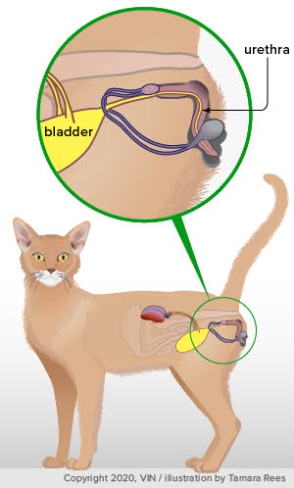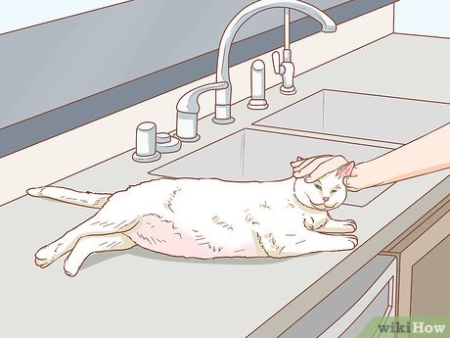Master the Art of Cat Whispering
Ah, the mysterious world of cat whispering. For many cat owners, understanding their feline friend can feel like decoding an ancient language. But fear not, because with a little patience and a lot of love, you too can become a master at communicating with your furry companion.

Image Source: marylandpetemergency.com
Cat whispering is all about tuning in to your cat’s unique way of communicating, which often involves subtle body language cues and vocalizations. By paying close attention to your cat’s behavior and responses, you can gain a deeper understanding of their needs, preferences, and emotions.
One of the key aspects of cat whispering is learning to interpret your cat’s body language. Cats are expert communicators through their posture, tail movements, and facial expressions. For example, a cat with an arched back and puffed-up fur is likely feeling threatened or defensive, while a cat with a relaxed posture and gently wagging tail is feeling content and comfortable.

Image Source: wikihow.com
In addition to body language, vocalizations also play a crucial role in cat communication. From meows to purrs to chirps, each sound has its own meaning and can give you valuable insights into your cat’s mood and desires. By paying attention to the different sounds your cat makes and the context in which they occur, you can start to decipher the language of feline vocalizations.
But cat whispering is not just about decoding your cat’s signals – it’s also about building a strong bond based on trust and mutual understanding. By spending quality time with your cat, engaging in interactive play, and providing plenty of love and affection, you can establish a deep connection that will allow you to communicate with your feline friend on a whole new level.
Of course, becoming a cat whisperer also involves honing your observation skills and practicing patience. Cats are complex creatures with their own unique personalities and quirks, so it may take time to fully understand and connect with your furry companion. But with dedication and a positive attitude, you can unlock the secrets of cat whispering and forge a strong and special bond with your cat.
So, the next time you find yourself wondering what your cat is trying to tell you, remember to tune in to their body language, listen to their vocalizations, and most importantly, trust your instincts. With a little practice and a lot of love, you too can master the art of cat whispering and become a pro at understanding your feline friend like never before.
The Scoop on Feeling Your Cat‘s Bladder
Welcome to the ultimate guide to understanding your feline friend! Today, we’re going to dive into the fascinating world of feeling your cat’s bladder like a pro. While it may sound like a daunting task, with a little practice and know-how, you’ll soon be able to confidently check your cat’s bladder health in no time.
As a responsible cat owner, it’s important to keep an eye on your furry friend’s health, including their urinary system. By learning how to feel your cat’s bladder, you can monitor for any potential issues such as urinary tract infections or blockages. So, let’s get started!
First things first, you’ll need to find your cat’s bladder. Your cat’s bladder is located in the lower abdomen, towards the back end of their body. It’s about the size of a small balloon when full, so you’ll want to gently press down on this area to feel for it.
When feeling your cat’s bladder, it’s important to do so gently and with care. Use your fingertips to apply gentle pressure to the lower abdomen, just above the hind legs. You should be able to feel a small, soft, round mass – this is your cat’s bladder.
It’s important to note that you should never press too hard or cause your cat any discomfort while feeling their bladder. If your cat seems uncomfortable or in pain, stop immediately and consult your veterinarian.
Now that you’ve located your cat’s bladder, it’s time to check for any abnormalities. A healthy bladder should feel soft and smooth, without any lumps or bumps. If you feel any unusual masses or your cat shows signs of pain when you touch their bladder, it’s crucial to seek veterinary attention right away.
Regularly feeling your cat’s bladder can help you monitor their urinary health and catch any potential issues early. By becoming familiar with how your cat’s bladder feels when it’s healthy, you’ll be better equipped to notice any changes that could indicate a problem.
In addition to feeling your cat’s bladder, it’s also essential to pay attention to their litter box habits. Changes in urination frequency, amount, or appearance can be signs of underlying health issues. By combining regular bladder checks with monitoring your cat’s litter box habits, you’ll have a comprehensive view of your cat’s urinary health.
Remember, your cat’s health is in your hands, so it’s essential to be proactive in monitoring their well-being. By mastering the art of feeling your cat’s bladder, you’ll be better equipped to keep your furry friend happy and healthy for years to come.
So, grab your cat, gently feel their bladder, and become a pro at understanding your feline friend’s urinary health. With a little practice and observation, you’ll be well on your way to being a cat health expert in no time. Your furry friend will thank you for it!
Unlocking the Secrets of Feline Body Language
Welcome to the ultimate guide to understanding your feline friend! Cats are mysterious creatures with their own unique ways of communicating with us. One of the key ways they do this is through their body language. By learning how to read your cat’s body language, you can better understand their needs and emotions, and strengthen the bond you share with your furry companion.
So, let’s dive into the fascinating world of feline body language and unlock the secrets that your cat is trying to tell you.
1. Tail Talk:
A cat’s tail is like a barometer of their emotions. When your cat’s tail is upright and gently curving at the top, it means they are feeling content and happy. On the other hand, a tail that is puffed up like a bottle brush indicates fear or aggression. Pay attention to the subtle movements of your cat’s tail to gauge their mood.
2. Ear Expressions:
Cats have a wide range of ear expressions that can give you a clue about how they are feeling. Ears that are perked up and facing forward show that your cat is alert and interested, while ears flattened against their head can indicate fear or aggression. If your cat’s ears are twitching, they may be feeling playful or curious.
3. Eye Contact:
Eye contact is another important form of communication for cats. A slow blink from your cat is a sign of trust and affection. If your cat is staring at you with dilated pupils, they may be feeling threatened or anxious. Avoid direct eye contact with a cat you don’t know well, as this can be seen as a challenge.
4. Body Posture:
The way your cat holds their body can also give you clues about their mood. A cat that is crouched low to the ground with their tail tucked between their legs is likely feeling scared or submissive. On the other hand, a cat that is standing tall with their back arched and fur puffed up is displaying aggression. Pay attention to your cat’s body posture to understand how they are feeling in any given situation.
5. Vocalizations:
While cats are not as vocal as Dogs, they still use meows, purrs, and other sounds to communicate with us. A high-pitched meow can indicate excitement or a request for attention, while a low growl or hiss is a warning sign of aggression. Pay attention to the tone and pitch of your cat’s vocalizations to understand what they are trying to tell you.
By learning to interpret your cat’s body language, you can deepen your bond with them and ensure that their needs are met. Remember that every cat is unique, so take the time to observe and understand your cat’s individual communication style. With practice and patience, you can become a pro at reading your purrfect pal and enrich your relationship with your feline friend.
Become a Pro at Reading Your Purrfect Pal
Welcome to the ultimate guide on understanding your feline friend! Cats can be mysterious creatures, but with a little know-how, you can learn to decipher their behaviors and signals like a pro. In this section, we will delve into the art of reading your purrfect pal and understanding what they are trying to communicate to you.
One of the most important aspects of understanding your cat is being able to read their body language. Cats communicate a lot through their body movements, and by paying attention to these cues, you can better understand how they are feeling. For example, if your cat has their tail puffed up and their back arched, they may be feeling scared or threatened. On the other hand, if they are lying on their back with their belly exposed, they are likely feeling relaxed and comfortable.
Another key element in understanding your cat is their vocalizations. Cats have a wide range of meows, purrs, and other sounds that they use to communicate with their humans. By paying attention to the different sounds your cat makes, you can start to pick up on what they are trying to tell you. For example, a high-pitched meow may indicate that your cat is hungry or in need of attention, while a deep purr usually means that they are content and happy.
In addition to body language and vocalizations, it is also important to pay attention to your cat’s behavior and habits. Cats are creatures of routine, and any changes in their behavior could indicate that something is wrong. For example, if your normally active cat suddenly becomes lethargic, they may be feeling unwell. Likewise, if your cat starts eliminating outside of their litter box, it could be a sign of a urinary tract issue.
One important aspect of reading your cat is being able to feel their bladder. Cats are notorious for hiding signs of illness, especially when it comes to urinary issues. By gently palpating your cat’s bladder on a regular basis, you can monitor for any changes in size or consistency that may indicate a problem. A healthy bladder should feel firm and smooth, while a swollen or painful bladder could be a sign of infection or blockage.
To feel your cat’s bladder like a pro, start by gently palpating their lower abdomen while they are relaxed. Use your fingertips to feel for any abnormalities or changes in size. If you notice anything unusual, such as swelling, tenderness, or lumps, it is important to consult your veterinarian for further evaluation.
In conclusion, becoming a pro at reading your purrfect pal involves paying attention to their body language, vocalizations, behavior, and habits. By tuning into these cues and regularly checking their bladder for any abnormalities, you can better understand your cat and provide them with the care they need. Remember, cats are complex creatures, but with a little practice and observation, you can become an expert at deciphering their signals and communicating with them effectively.
how to feel a cat’s bladder
